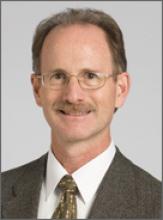Family medicine is a relatively young specialty, established in 1969 in response to the dwindling number of generalist physicians in the United States (sound familiar?). I recently re-read the Willard Report,1 which the American Medical Association published in 1966. Its title (“Meeting the Challenge of Family Practice”) and its contents, which describe in detail the definition, functions, and training requirements for this new specialty, are just as pertinent today as they were nearly 50 years ago. The report describes not only patient care functions but also care coordination and community involvement. It provides a critique of medical school education and suggestions on recruiting students to family practice. There is a chapter on appropriate “models of family practice.”
What brought this report to mind was the October launch of the “Family Medicine for America’s Health” initiative at the American Academy of Family Physicians Assembly. The initiative, led by a collaboration of 8 family medicine organizations, seeks to organize and reinvigorate family medicine to respond to today’s health care challenges.
As detailed in an article in Annals of Family Medicine,2 the goals of Family Medicine for America’s Health are “... to strategically align work to improve practice models, payment, technology, workforce and education, and research to support the Triple Aim.”2 The Triple Aim is an effort to create better health, better health care, and lower cost for patients and communities. Family Medicine for America’s Health “... is also a humble invitation to patients and to clinical and policy partners to collaborate in making family medicine even more effective.”2 Teams will develop initiatives in 6 areas—technology, practice, payment, workforce education, research, and engagement—to bring family medicine to the center stage of health care reform.
To quote the famous American philosopher Yogi Berra, “It’s déjà vu all over again.” Although we have clearly made significant progress over the past half century, family medicine has a long way to go. The landscape of health care in the United States has changed markedly, but the principles of family medicine remain the same. The implementation of these principles, however, is what is so difficult for us today.
That is why each of us needs to step up to the plate and work with our family medicine organizations to improve primary care delivery in the United States. Doing so will ensure that it is not “déjà vu all over again” 50 years from now.


